Compared: 2022 Toyota Tacoma vs. 2022 Toyota 4Runner
Built on the same platform, the 4Runner SUV and Tacoma pickup truck offer similar capability in different packages.
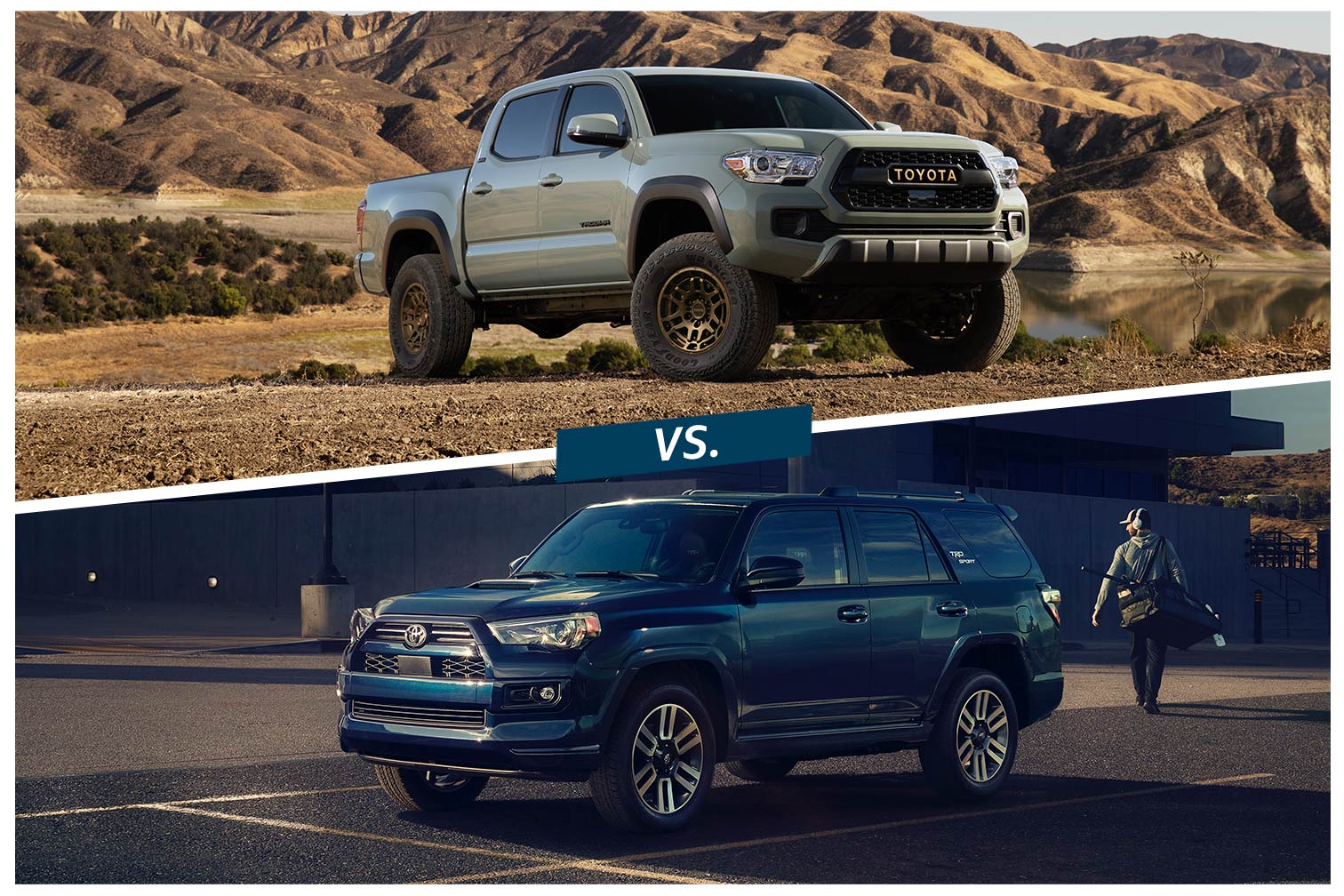 Toyota
Toyota
The Toyota 4Runner and Tacoma are two nameplates with serious cachet among off-road enthusiasts, but in a market that increasingly values capability and practicality, the midsize SUV and pickup are alluring to average shoppers, too. If you’re deciding between them, you’ll want to ask yourself how much capability you really need and how much comfort you’re willing to sacrifice for it.
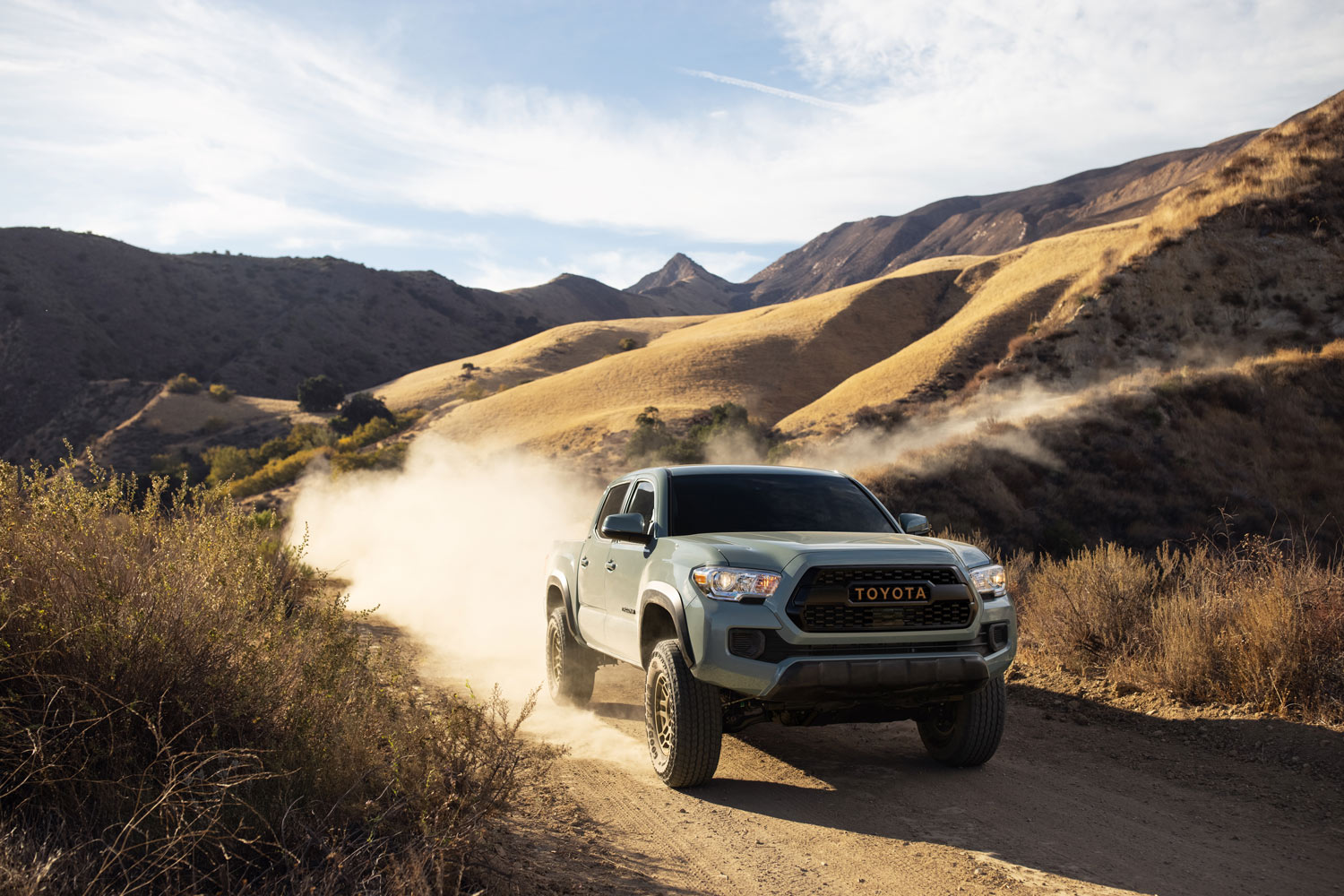 Toyota
Toyota
Toyota Tacoma vs. Toyota 4Runner: Price
The Tacoma starts around $27,000, undercutting the entry-level 4Runner’s price by nearly $13,000, but that’s for Toyota’s bare-bones SR trim with the Utility package, which removes the rear speakers, seats, and cup holders to save the buyer $1,715. The lowliest 4Runner is the nearly $40,000 SR5—a trim level that costs about $30,000 in the truck lineup. One reason for the 4Runner’s premium is that it comes standard with four full-size doors, which is an optional feature on many of the Tacoma’s trims. Getting a Tacoma SR5 in Double Cab (four regular doors) brings the truck up to nearly $32,000. Toyota charges extra for four-wheel drive on both models, at least at the low end of their lineups. Adding 4WD to the Tacoma costs around $3,000 when it’s optional on a given trim level.
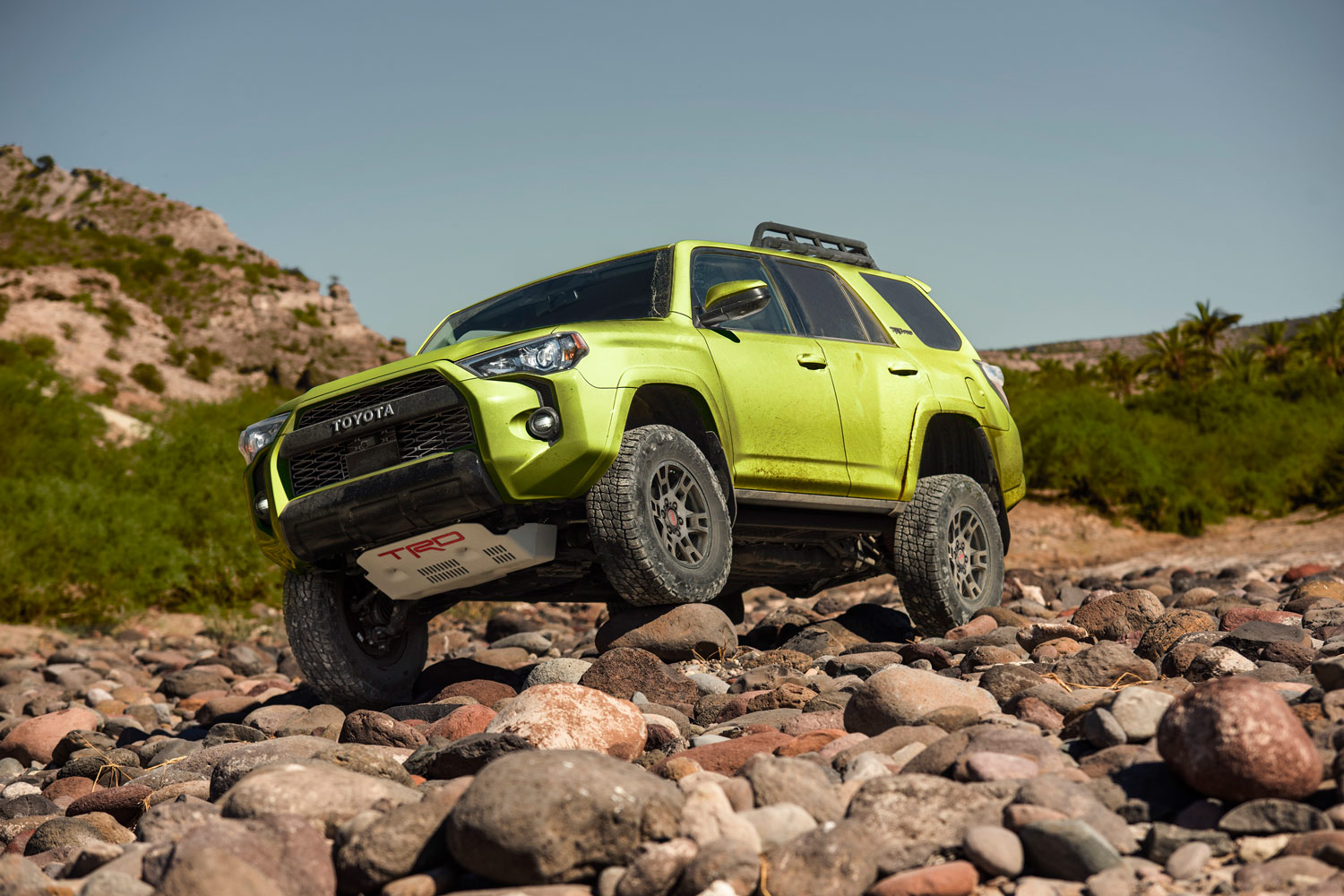 Toyota
Toyota
There is just one engine option in the 4Runner: a 270-hp, 4.0L V6. The pickup, though, has two: It comes standard with a 159-horse, 2.7L four-cylinder. The step up from that (and at a cost of $2,260 on the base Tacoma) is a far burlier 3.5L V6, which makes 278 horsepower.
While both vehicle families have many trim levels, the top dog of each range is the TRD Pro, with standard four-wheel drive and special features aimed toward off-roading. These include internal-bypass dampers, a suspension lift, aluminum skid plates, and a cat-back exhaust. The 4Runner TRD Pro will set you back just over $54,000, whereas the TRD Pro Tacoma demands nearly $48,000.
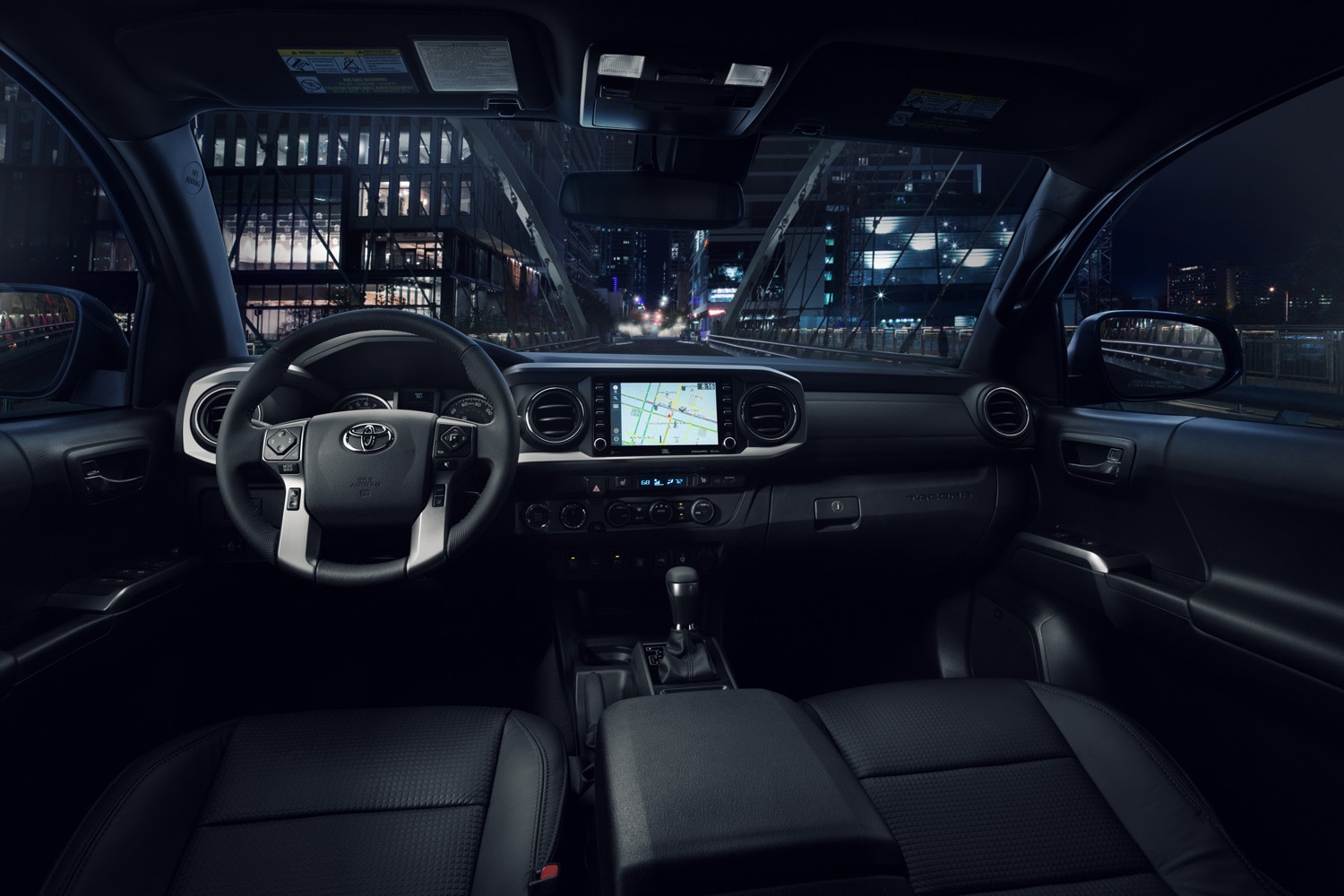 Toyota | Tacoma
Toyota | Tacoma
Toyota Tacoma vs. Toyota 4Runner: Interior
The Tacoma in Access Cab form is pretty par-for-the-course when it comes to extended cab pickup trucks. The midsize truck has a smaller pair of reverse-hinged rear doors and seat belts for five, but it’s not going to be terribly comfortable for larger adults in the back row. The Double Cab Tacoma has two sets of full-size doors and is about the same size as the two-row 4Runner on the inside, albeit with a different cargo arrangement. In either you can comfortably fit four adults, and a fifth wouldn’t be absolutely miserable on a long ride. Though, if you absolutely want to carry a few more people, a three-row 4Runner is available that ups occupancy to seven with a pair of seats in the back. The 4Runner with the optional third-row seats has the option of adjusting the second row seats forward and back on a sliding track, so legroom can be increased or decreased as needed. That being said, headroom for adults is the tightest in that third row, so seat accordingly.
 Toyota | 4Runner
Toyota | 4Runner
The two aren’t drastically different in terms of content. A cloth interior is standard for many trims, but both vehicles offer leather upholstery at the top of the range. They also boast infotainment systems featuring an 8-inch touchscreen, although the base Tacoma uses a 7-inch unit. That said, the 4Runner has a slight edge in creature comforts, as it offers seat ventilation and a premium 15-speaker sound system—neither of which you’ll find in a Tacoma.
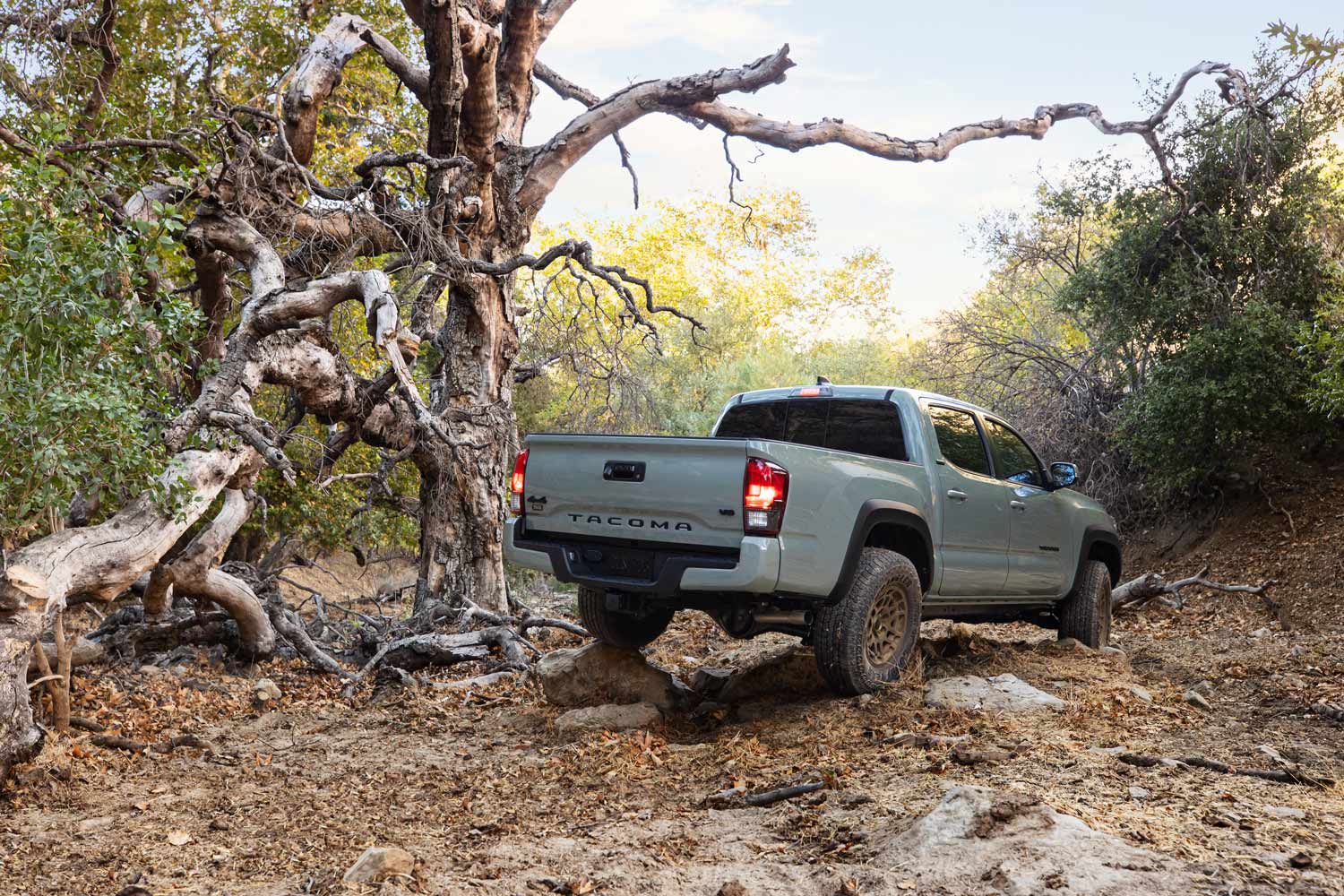 Toyota
Toyota
Toyota Tacoma vs. Toyota 4Runner: Towing
The four-cylinder-equipped Tacoma tugs just 3,500 pounds. Opt for the V6 and maximum towing capacity jumps to between 6,400 and 6,800 pounds, depending on the cab choice and drivetrain. The 4Runner splits the difference, offering a 5,000-pound rating across the lineup.
 Toyota
Toyota
When it comes to payload, the SUV has the edge. It offers ratings between 1,495 and 1,700 pounds, whereas the pickup can manage between 1,155 and 1,685 pounds in its bed.
Written by humans.
Edited by humans.
 Austin Lindberg
Austin LindbergAustin Lindberg has spent the past 15 years working in journalism as a reporter and an editor covering the automotive industry, motorsports, and soccer for publications in the U.S. and the U.K. He is an EV owner with a keen interest in electrification and green tech.
Related articles
View more related articles